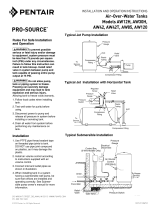
OWNER’S MANUAL
Composite Pressurized Water Tanks
NOTICE D’UTILISATION
Réservoirs d’eau sous pression en composite
MANUAL DEL PROPIETARIO
Tanques de agua a presión en compuesto
®
5894 0112
PSC Series | Série PSC | Serie PSC
© 2012 Pentair, Inc. All Rights Reserved. CH21086 (11/28/12)
293 WRIGHT STREET, DELAVAN, WI 53115 WWW.STA-RITE.COM
PH: 888-782-7483
Installation/Operation/Parts
For further operating, installation, or
maintenance assistance:
Call 1-888-782-7483
English ...........Pages 2-8
Installation/Fonctionnement/Pièces
Pour plus de renseignements
concernant l’utilisation,
l’installation ou l’entretien,
Composer le 1 (888) 782-7483
Français .........Pages 9-15
Instalación/Operación/Piezas
Para mayor información sobre el
funcionamiento, instalación o
mantenimiento de la bomba:
Llame al 1-888-782-7483
Español .......Paginas 16-22

Safety 2
Important Safety Instructions
SAVE THESE INSTRUCTIONS - This manual contains
important instructions that should be followed during
installation, operation, and maintenance of the product.
Save this manual for future reference.
This is the safety alert symbol. When you see this
symbol on your pump or in this manual, look for one of
the following signal words and be alert to the potential
for personal injury!
indicates a hazard which, if not avoided, will
result in death or serious injury.
indicates a hazard which, if not avoided,
could result in death or serious injury.
indicates a hazard which, if not avoided,
could result in minor or moderate injury.
NOTICE addresses practices not related to
personalinjury.
Carefully read and follow all safety instructions in this
manual and on product.
Keep safety labels in good condition. Replace missing or
damaged safety labels.
Install this tank in vertical position only. If your
installation requires a horizontal tank, contact your
dealer for available steel tanks.
California Proposition 65 Warning
This product and related accessories contain
chemicals known to the State of California to cause
cancer, birth defects or other reproductive harm.
Rules For Safe Installation And Operation
Risk of explosion. Installation must comply
with all applicable state, provincial, and local statutes,
codes and ordinances. Non-compliant installation
may result in product failure, property damage, and/or
personal injury.
1. Read the owner’s manual and Rules for Safe
Installation and Operation and Installation
instructions carefully. Failure to follow these rules
and instructions could cause serious bodily injury
and/or property damage.
2. Always test water from well for purity before
using. Check your local health department for
testingprocedure.
3. Before installing or servicing your tank, BE SURE
pump electric power source is disconnected.
4. Release all pressure before working on tank or
system. Make sure all air pressure has been released
before removing tank flanges.
5. BE SURE your pump electrical circuit is
properlygrounded.
6. Remove bleeder orifices, air volume controls or other
air charging devices in existing system.
Risk of explosion. To prevent possible serious
or fatal in jury and/or damage to equipment, system
pressure must be less than 125pounds per square
inch gauge (psig) under any circumstances. Failure to
follow this instruction can result in tank explosion.
If system discharge pressure can exceed 125psig,
install a relief valve capable of passing the full pump
volume at 125psig. Install relief valve in pump
supply line to tank, as close to tank as possible.
Risk of freezing. To avoid possible
equipment failure, severe injury, and property damage,
do not allow pump, tank, or piping system to freeze.
General Safety
All tanks are factory pre-charged with air. When
installing tank, adjust pre-charge to 2 psig below pump
cut-in pressure setting. To do this, bleed air from or add
air to the valve on top of the tank.
NOTICE Always set pre-charge with NO WATER in tank.
Check pressure frequently with an accurate tire pressure
gauge until correct pressure has been reached. For
correct pre-charge pressure settings, see Table 1.
Pressure Switch Setting Tank Precharge (psig)
20-40 psig 18
30-50 psig 28
40-60 psig 38
50-70 psig 48
Table I

Warranty • Product Specifications 3
Retain Original Receipt For Warranty Eligibility
Product Specifications
Model Tank Capacity (U.S. Gals) Tank Diameter (In.) Tank Height (In.) Discharge Tapping (In.)
Distance from Base to
Centerline of Fitting (In.)
PSC-14-4-01 14
16
28.2
1 1.75
PSC-20-6-01 20 34.1
PSC-30-9-01 30 46.3
PSC-40-12-01 40 59.0
PSC-48-14-01 48 21 65.5
1-1/4 2.25
PSC-60-20-01 60 24 43.6
PSC-80-23-01 80 21 44.4
PSC-85-25-01 85
24
57.2
PSC-119-35-01 119 75.4
Maximum Internal Water Temperature – 120° F.
Maximum Ambient Air Temperature – 120° F.
Allow 12” clearance over top of tanks for service access.
Limited Warranty
STA-RITE warrants to the original consumer purchaser (“Purchaser” or “You”) of the products listed below, that they will be free
from defects in material and workmanship for the Warranty Period shown below.
Product Warranty Period
Water Systems Products — jet pumps, small centrifugal pumps,
submersible pumps and related accessories
whichever occurs first:
12 months from date of original installation,
or 18 months from date of manufacture
Pro-Source™ Composite Tanks 5 years from date of original installation
Pro-Source™ Steel Pressure Tanks 5 years from date of original installation
Pro-Source™ Epoxy-Lined Tanks 3 years from date of original installation
Sump/Sewage/Effluent Products
12 months from date of original installation, or
18 months from date of manufacture
Our warranty will not apply to any product that, in our sole judgement, has been subject to negligence, misapplication, improper
installation, or improper maintenance. Without limiting the foregoing, operating a three phase motor with single phase power
through a phase converter will void the warranty. Note also that three phase motors must be protected by three-leg, ambient
compensated, extra-quick trip overload relays of the recommended size or the warranty is void.
Your only remedy, and STA-RITE’s only duty, is that STA-RITE repair or replace defective products (at STA-RITE’s choice). You must
pay all labor and shipping charges associated with this warranty and must request warranty service through the installing dealer
as soon as a problem is discovered. No request for service will be accepted if received after the Warranty Period has expired. This
warranty is not transferable.
STA-RITE SHALL NOT BE LIABLE FOR ANY CONSEQUENTIAL, INCIDENTAL, OR CONTINGENT DAMAGES WHATSOEVER.
THE FOREGOING WARRANTIES ARE EXCLUSIVE AND IN LIEU OF ALL OTHER EXPRESS AND IMPLIED WARRANTIES,
INCLUDING BUT NOT LIMITED TO THE IMPLIED WARRANTIES OF MERCHANTABILITY AND FITNESS FOR A PARTICULAR
PURPOSE. THE FOREGOING WARRANTIES SHALL NOT EXTEND BEYOND THE DURATION EXPRESSLY PROVIDED HEREIN.
Some states do not allow the exclusion or limitation of incidental or consequential damages or limitations on the duration of an
implied warranty, so the above limitations or exclusions may not apply to You. This warranty gives You specific legal rights and
You may also have other rights which vary from state to state.
This Limited Warranty is effective June 1, 2011 and replaces all undated warranties and warranties dated before June 1, 2011.
STA-RITE INDUSTRIES
293 Wright Street • Delavan, WI U.S.A. 53115
Phone: 1-888-782-7483 • Fax: 1-800-426-9446 • Web Site: sta-rite.com

Operating Cycle
1. Tank nearly empty – air expands filling area inside
air cell (Figure 2A).
2. Water begins to enter tank – air is compressed in air
cell as tank fills with water (Figure 2B).
3. Pump-up cycle completed – air pressure has reached
the cut off setting of pressure switch (Figure 2C).
4. Water being drawn from tank – compressed air in air
cell forces water out of tank (Figure 2D).
5. Tank now empty – new cycle ready to begin
(Figure2A).
NOTICE Drawdown will be affected by operating
temperature of the system, accuracy of the pressure
switch and gauge, the actual precharge pressure, and the
rate of fill.
Safety ∙ Installation 4
Air
Water
Water
6715 1112
Air
Water
Water
Air
Water
Water
Air
Water
Water
Figure 2A Figure 2B
Figure 2C Figure 2D
Figure 2: Air Cell Cycle
Table 2 – Water Yield Per Pump Cycle inGallons
From
Well
To
Service
From
Well
To
Service
Tanks
Tanks
Pressure Switch
Pressure Switch
191 0893
Figure 1B: Typical Layout With Three Tanks
From
Well
To
Service
From
Well
To
Service
Tanks
Tanks
Pressure Switch
Pressure Switch
191 0893
Figure 1A: Typical Layout With Two Tanks
NOTICE Replace and tighten air valve cap if it is
re moved for any reason. Failure to replace air cap may
allow loss of air pressure and eventually lead to tank
waterlogging and air cell failure.
Pre-charged storage tanks can be connected together to
increase the supply of usable water (drawdown). Two
tanks of the same size will double the supply and three
tanks will triple the supply. See Figures 1A and 1B for
typical installations of this kind.
Model
Number
Tank Capacity
U.S. Gallons
Water Yield Per Pump Cycle
U.S. Gallons
Pressure Switch Setting
psi
20-40 30-50 40-60
APSC-14-4 14 5.3 4.5 3.9
APSC-20-6 20 7.2 6.1 5.3
APSC-30-9 30 10.8 9.1 7.9
APSC-40-12 40 14.7 12.5 10.8
APSC-48-14 48 17.2 14.6 12.6
APSC-60-20 60 21.9 18.5 16.1
APSC-80-23 80 29.1 24.6 21.3
APSC-85-25 85 31.7 26.8 23.2
APSC-119-35 119 43.8 37.0 32.0

Installation • Operation 5
Installation
Connect system pipe to elbow on tank flange. Use plastic
or steel pipe as required. To prevent leaks, use PTFE
pipe thread sealant tape on male threads of all threaded
connections to tank.
NOTICE To be sure that joint is not cross-threaded and
that threads are clean, always make connections by
hand (without sealer) first. After making sure that threads
are clean, remove pipe, add PTFE tape, and remake
connection. Do not overtighten pipe connection at tank.
Thread connection on hand tight plus 3 additional turns
for steel pipe and 1-2 turns for schedule 40 PVC pipe.
NOTICE When replacing a standard tank in a
submersible pump system, raise pump and discharge
pipe far enough to remove bleeder orifices from the tees
in the discharge pipe. Plug the tees. When replacing a
standard tank in a jet pump system, remove Air Volume
Control (AVC) and plug AVC port in pump.
In areas where the temperature is high for long periods
of time, the tank pre-charge pressure may increase.
This may reduce the tank drawdown (amount of water
available per cycle). If this occurs, reduce the pre-charge
pressure to two PSI below the pump cut-in setting of the
pressure switch.
It is necessary to flush all air out of the piping system and
water reservoir portion of the pre-charged tank. This is
required on new installations, pumps requiring repriming
and pumps that have been disassembled for service.
Proceed as follows:
1. Open faucets furthest from tank and allow pump
tooperate.
2. Air in the system will cause a sputtering flow; allow
faucets to run until you have a steady, air free stream.
3. Open and close faucets repeatedly until you are sure
all air has been removed.
4. If stream does not become steady, air may be leaking
into the system; check for leaks in the piping on the
suction side of the pump.
NOTICE To prevent waterlogging, check tank air charge
every six months.
Check Tank Air Charge
If drawdown (amount of water that comes out of tank per
pump cycle) decreases significantly, check as follows:
1. To check air charge in tank, shut off electric power to
pump, open faucet near tank, and drain completely.
2. Remove pole piece cap and check air pressure at the
air valve in top of tank with a standard tire gauge.
See Figure 3. Air pressure should be 2 psig below
pump pressure switch cut-in setting (if switch closes
at 30 psig, pressure in tank should be at 28psig).
3. If the air pressure is more than 2 psig below the cut-
in setting, add air to the tank. Use an air compressor
or a portable air storage tank.
4. Use soap or liquid detergent to check for air leaks
around air valve. Continuous bubbling indicates a
leak. If necessary, install new core in air valve. This is
the same as those used for automobile tubeless tires.
Check Pump Pressure Switch Setting
1. To check pressure switch setting, disconnect power
to pump at supply panel (but be sure to leave
pressure switch connected to power supply wires).
2. Remove pressure switch cover.
3. Open a faucet near tank.
4. Allow water to drain until pressure switch contacts
close; immediately close faucet.
5. Check pressure at valve with standard tire gauge or
with pump pressure gauge (if supplied).
6. Pressure gauge should read 2psig below pump
cut-in setting (28psig for 30-50 switch, 18psig for
20-40switch, etc.) If not:
A. Adjust switch according to switch
manufacturer’sinstructions.
B. Reconnect power supply to pump and pump up
pressure in system.
C. Disconnect power supply to pump again and
re-check switch setting.
D. Repeat until pressure switch starts pump within
±1 psig of proper setting.
E. If cut-in setting is too low, system will rattle or
develop water hammer when pump starts.
F. Cut-out setting is not as critical as cut-in setting.
Make sure that pump will stop running in a rea-
son able time. If it does not, cut-out setting may
need to be adjusted down slightly. Be sure that
after readjustment, system does not rattle or
hammer on startup.
7. Re-check tank air pre-charge to be sure it is 2psig
below pump pressure switch cut-in setting.
5899 0112
Figure 3: Use A Tire Gauge To Check Precharge In AirCell

Operation 6
Testing for Air Cell Leakage
1. Disconnect power to pump.
2. Drain all water from tank by opening faucet closest
to tank.
3. Remove pole piece cap and valve cap from valve
and charge air cell.
4. Check air pressure after 24 hours. If air cell leaks,
pressure will drop. If so, replace air cell.
Figures 4, 5 and 6 depict typical tank installations
Figure 6: Typical Installation with Vertical Multi-Stage
Pump
20
100
80
60
40
To
Service
Relief
Valve
Floor
Drain
Pressure
Gauge
Pressure
Switch
Pressure
Regulator
Check
Valve
5897 0112
Pressure
Switch
To
Service
Relief
Valve
Floor
Drain
Pressure
Gauge
From
Submersible
Pump in Well
5896 0112
Figure 5: Typical Installation with Submersible Pump
Pressure
Switch
To Household
Water System
From Well
Relief Valve
Check Valve
5895 0112
Figure 4: Typical Installation with Jet Pump

Air Cell Replacement
HAZARDOUS PRESSURE. Read owner’s
manual before attempting to install, operate, or service
this tank. To avoid possible equipment failure, severe
injury, and property damage, see “Rules for Safe
Installation and Operation”, page 2.
1. Disconnect the power to the pump.
2. To release the water pressure from the tank system,
open a faucet near the tank to drain the water.
3. Remove the pole piece cap from the tank and the
valve cap from the valve. Depress the valve stem to
release the air pressure from the air cell.
4. Remove the valve core to release the rest of the air
pressure (see Valve Core Replacement).
5. Remove the valve stem nut and washer.
6. With a screwdriver, pry the red c-clips out to remove.
7. Remove the polar boss cap. See Figure 7 for an
overall disassembly view.
8. Disconnect the tank from the water supply line and
carefully lay it on its side (protect the sides of the
tank). DO NOT DROP.
9. With a large pair of slip-joint pliers, unscrew the
elbow adapter from the tank.
10. Remove air cell by reaching into the tank and pulling
it through the open top port. The tether pin should
come out of the elbow adapter as you pull.
11. Lubricate the elbow adapter O-Ring with O-Ring
lubricant.
12. Remove elbow adapter lid and push the tether pin
through from the top. From the bottom of the elbow
adapter lid, pull the head of the tether pin until the
fins hook it into place. Reinstall the elbow adapter lid
on the elbow adapter. See Figure 8.
13. While squeezing the air cell, push the valve end of
the air cell into the bottom of the tank. Push it in as
far as possible without losing the bottom of the air
cell in the tank.
14. Reinstall the elbow adapter, with new air cell in
place, in the bottom of the tank and tighten it against
the O-Ring to seal it.
15. Reach into the tank from the top and pull the air cell
into position.
16. Clean the tank sealing surface before installing the
top flange assembly.
17. Clean the sealing surface and groove of the polar
boss cap; re-lubricate and install the O-ring on the
polar boss cap.
18. Push the valve up through the polar boss cap.
19. Install the washer and valve stem nut on the valve.
20. Reinstall the polar boss cap, with new air cell
installed, in the top opening. Fasten it with two (2)
red c-clips.
21. Stand the tank back on its base and reconnect it to
the water supply line.
22. Recharge the tank to its proper air pressure (see
“General Safety”, Page 2). Install the valve cap and
the pole piece cap.
23. Prime the pump (see the pump owner’s manual) and
restart the system.
Valve Core Replacement
HAZARDOUS PRESSURE. To be sure air
valve and core cannot blow out of tank, release all air
pressure from tank before removing valve core.
1. Disconnect power to pump.
2. Drain ALL water in system by opening faucet closest
to tank.
3. Depress valve core to release ALL air pressure in
tank. When air stops coming out of valve, remove
core from inside of valve to release remaining
pressure. Thread new valve core into tank valve
andtighten.
NOTICE Do not overtighten.
4. Recharge tank with air pressure (see Figure 3)
according to Table 1. Install valve cap and pole piece
cap; reconnect power to pump.
Tank is ready foruse.
Maintenance 7
5900 0112
Pole Piece Cap
Valve Stem Nut
Washer
Polar Boss Cap
O-Ring
C-Clips
Figure 7: Remove Pole Piece Cap, Valve Cap and
Retaining Nut, Clips, and Polar Boss Cap.
6725 1212
Figure 8: Push tether pin through from the top. Pull the
head until the fins hook in into place.

Repair Parts 8
Model Ref. 7 - Base Ref. 10 - SS Elbow* Ref. B - Elbow Adapter Kit Ref. C - Air Cell Kit
PSC-14-4-01 CH20364-1 CH21026 CH21082K CH10836-1K
PSC-20-6-01 CH20364-1 CH21026 CH21082K CH10865-1K
PSC-30-9-01 CH20364-1 CH21026 CH21082K CH10866-1K
PSC-40-12-01 CH20364-1 CH21026 CH21082K CH10867-1K
PSC-48-14-01 CH20343-1 CH21027 CH21083K CH11161-1K
PSC-60-20-01 CH20343-1 CH21027 CH21083K CH11160-1K
PSC-80-23-01 CH20343-1 CH21027 CH21083K CH15149-1K
PSC-85-25-01 CH20343-1 CH21027 CH21083K CH11159-1K
PSC-119-35-01 CH20343-1 CH21027 CH21083K CH10829-1K
* Elbow only: CH21026 = 1” NPT; CH21027 = 1-1/4” NPT.
Ref. Description Qty. Part Number
A Polar Boss Cap Kit (includes Ref. Nos. 1, 2, 3, 4, 5, 6)
1 Pole Piece Cap 1
CH20294K
2 Valve Stem Nut 1
3 Washer 1
4 C-Clip 2
5 Polar Boss Cap 1
6 O-Ring 1
7 Base 1 See table below
B Elbow Adapter Kit (includes Ref. Nos. 8, 9, 10)
8 O-Ring 1
See table below
9a Adapter Lid 1
9b Adapter
10 SS Elbow 1
C Air Cell Kit (includes Ref. Nos. 11, 12, 13, 14)
11 Valve Cap 1
See table below
12 Valve Core 1
13 Rubber Washer 1
14 Air Cell 1
1
2
3
4
5
6
11
12
14
13
7
8
9A
9B
10
6718 1112
A
B
C
Page is loading ...
Page is loading ...
Page is loading ...
Page is loading ...
Page is loading ...
Page is loading ...
Page is loading ...
Page is loading ...
Page is loading ...
Page is loading ...
Page is loading ...
Page is loading ...
Page is loading ...
Page is loading ...
-
 1
1
-
 2
2
-
 3
3
-
 4
4
-
 5
5
-
 6
6
-
 7
7
-
 8
8
-
 9
9
-
 10
10
-
 11
11
-
 12
12
-
 13
13
-
 14
14
-
 15
15
-
 16
16
-
 17
17
-
 18
18
-
 19
19
-
 20
20
-
 21
21
-
 22
22
Pentair PSC-20-6-01 Owner's manual
- Type
- Owner's manual
- This manual is also suitable for
Ask a question and I''ll find the answer in the document
Finding information in a document is now easier with AI
in other languages
Related papers
Other documents
-
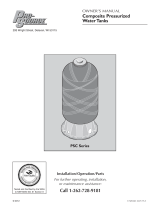 Pro-source PSC Series Owner's manual
Pro-source PSC Series Owner's manual
-
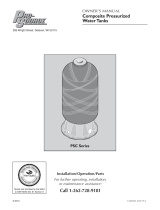 Pro-source PSC Series Owner's manual
Pro-source PSC Series Owner's manual
-
A.O. Smith LPT20 User manual
-
Little GIANT 558589 Installation guide
-
EASTMAN 60023 User manual
-
Topeak TFV-03 Owner's manual
-
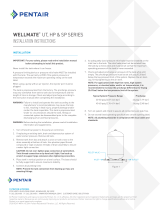 Wellmate UT, HP & SP Series Installation guide
Wellmate UT, HP & SP Series Installation guide
-
ProFlo PFXT1SS Installation guide
-
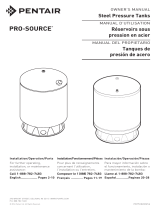 Pro-source Steel Pressure Tanks Owner's manual
Pro-source Steel Pressure Tanks Owner's manual
-
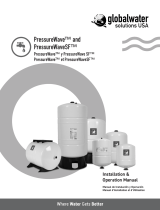 globalwater solutions PWN‐US‐80LV Installation guide
globalwater solutions PWN‐US‐80LV Installation guide






















